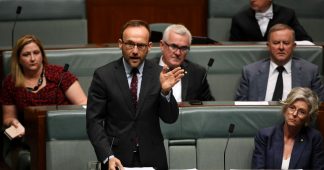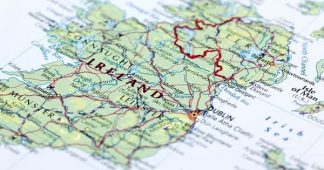by Hall Greenland
Labor’s primary vote in the elctions was at an historically low 32%. The Greens vote, on the other hand, reached its highest ever level of 12%. But the real standout in the elections was the surge of votes for liberal, female Independents who defeated a raft of conservative Coalition MPs in prosperous, middle-class urban seats. There will be at least eight of these Independents, all women professionals, in the lower house. They all advocated higher emissions targets (60%) than those promised by either Labor or the Coalition and a federal anti-corruption commission.
Beyond their policy positions, the victories of these ‘teal’ Independents – teal being their campaign colour – are being hailed as feminist triumphs. All their successful candidates are women and literally thousands of volunteers flocked to help in their campaigns. These volunteers were also overwhelmingly women. It would be a mistake to see this as just the rise of bourgeois women, even if the candidates were all successful professionals. The most militant parts of the Australian union movement are in those sectors dominated by women – nurses and teachers, whose recent strikes undoubtedly added to the mood for change.
By contrast, Labor’s election platform has rarely been so mild as in this election. It promised to raise both wages and profits and increase subsidies to the privatised aged-care and childcare sectors. It did pledge to reduce greenhouse emissions by 43% by 2030 but, equally, it promised to support new gasfields and coal mines – Australia is a major exporter of coal and gas.
It was the Greens who offered an antipodean version of the policies of Corbyn and Sanders. They argued for higher cuts to emissions (75% by 2030) but added a call to ban any more new coal mines or gasfields, along with a transition plan for redundant mine workers financed out of the profits of mine owners. In addition, they proposed government-owned corporations to build renewable power, transmission and grids and retail the electricity. This was combined with promises to cancel student debt, tax increases on billionaires and corporations, a plan for public housing and the inclusion of dental care into Medicare.
Labor secured its majority thanks to the preference votes of the Greens. Australia’s unique electoral system needs a note of explanation. There are two chambers in the federal parliament: the lower house with 151 single-member electorates and the upper house Senate of 76 members elected by proportional representation. Voting is compulsory and voters must rank their preferences on the ballot paper for their votes to be formal. If no candidate receives 50% plus one of the primary vote, then the candidate with the lowest number of votes is eliminated and their number 2 preferences distributed to the surviving candidates. This process continues until one candidate reaches 50% plus one.
Although counting continues and postal votes can be received this week, Labor looks likely to secure 76 or 77 seats in the lower house and form a majority government. The new Labor government will enjoy a traditional honeymoon period with the electorate, but testing times are not far off. The key election issue turned out to be climate action and there is a real mass, community-based movement for a significant and rapid transition away from fossil fuels. The Greens and the ‘teal’ Independents will certainly press Labor on this issue.
In its report on the elections, the London Financial Times has already noted that Labor government will take office in deteriorating economic conditions for which the conventional neo-liberal response is to further cut real wages and welfare spending. The economics editor of Australia’s main liberal newspaper, the Sydney Morning Herald, has commented that only a Keynesian Houdini could avoid these cuts. Any tricks or acrobatics will encounter a revived and expectant union movement.
To exacerbate its difficulties, Labor is committed to increased armaments spending. Notably, the first act of the new Labor Prime Minister, Anthony Albanese, is to fly to Tokyo for a meeting of the leaders of the anti-China ‘Quad’ alliance – United States, Japan, India and Australia. Labor is as committed to this military alliance as the former conservative Coalition, even if it will use less inflammatory language. The Coalition’s anti-China rhetoric appears to have fuelled an electoral backlash among Chinese Australians with the Coalition losing seats with big Chinese Australian communities. But the more significant short- to medium-term danger for Labor (and Australia) is that its prosperity relies on its mineral and coal exports to China.
Australia now enters a period of new political realities. Australians have hit the political ‘refresh’ button. The proportion of votes for the tradition parties of the Coalition and Labor, which have dominated Australian politics for more than a century, have fallen to below two-thirds. Labor’s only significant promise was to hold a referendum to enshrine an elected, consultative assembly for Indigenous Australians in the constitution. The campaign around this will only radicalise and strengthen the new centre-left bloc. Whether it can proceed to other triumphs is the challenge for the rising Greens and the largely ‘feminist’ extra-parliamentary movements.
We remind our readers that publication of articles on our site does not mean that we agree with what is written. Our policy is to publish anything which we consider of interest, so as to assist our readers in forming their opinions. Sometimes we even publish articles with which we totally disagree, since we believe it is important for our readers to be informed on as wide a spectrum of views as possible.











